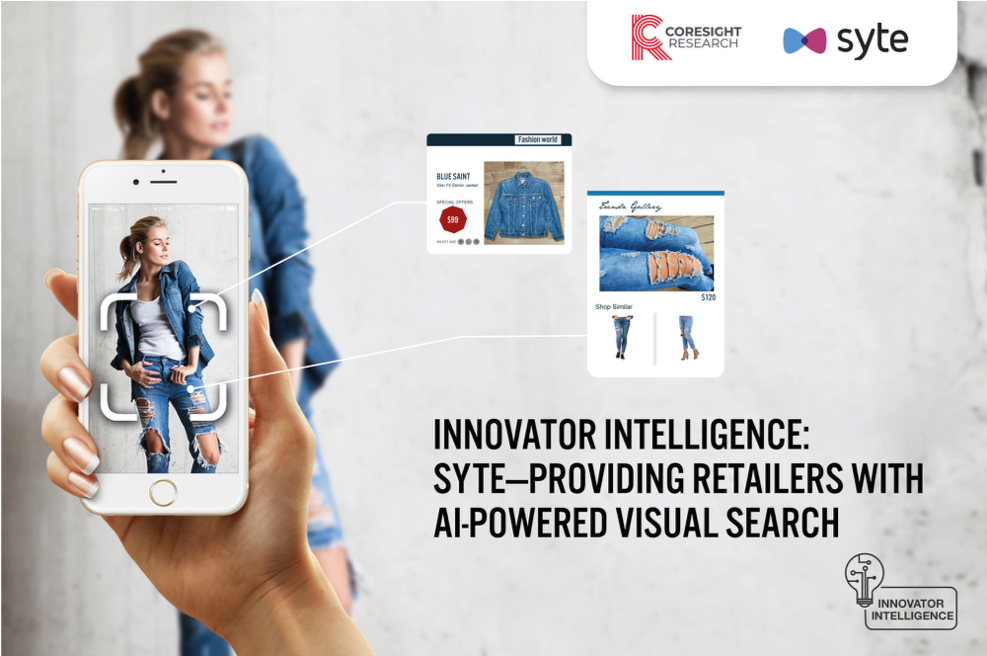
Saumya Sharma
Introduction
Searching for products can be a daunting task for shoppers, primarily because of the large number of near-identical products available. This in turn can create disinterest among consumers. In addition, shoppers have become increasingly fickle, and the shopper journey has transformed to include numerous channels to search for a product. The increase in search channels and better mobile connectivity have led to an abundance of information, which, in turn, has increased the complexity of decision making. This is about more than just browsing and comparing online: Shoppers switch readily between online and offline channels. For example, a shopper might see a product in the store but instead of buying it there, instead takes a picture to research and buy online later. With trends such as these, it’s more important than ever for retailers to give shoppers relevant, personalized and seamless experiences across all shopping channels. Retailers can leverage artificial intelligence (AI) and machine learning to enhance search results. Meet Visual Search Visual search is based on images rather than text. It enables customers to address questions that can be difficult to convert into text, such as “show me items similar to this” or if they simply are unsure of how to accurately describe a product. Visual search works through a combination of computer vision and machine learning, two hardware developments and evolving AI capabilities that have primarily contributed to the development and increasing accuracy of visual search. How Can Visual Search Help Brands and Retailers? Visual search can simplify and shorten the shopper journey. AI-powered visual tools help retailers, marketplaces and brands better connect with shoppers by delivering more accurate search results – making it easier for consumer to find the products they want to buy. Visual search can also give shoppers with a more personalized experience through smart mirrors and a “shop similar” feature, which increases conversion rates, basket size and drives customer loyalty. Report Overview This report is part of our Innovator Intelligence series, which focuses on emerging companies disrupting retail and fueling innovation across the retail value chain. In this report, we present an analysis of the key trends in the shopper journey which can be improved with the help of visual search. We also examine Syte, a company that specializes in AI-enabled visual search for the retail industry, and which offers a complete visual product discovery system. Online platforms, retailers and brands have already adopted Syte technology, such as Tommy Hilfiger, Farfetch and Venca.Industry Overview
Product Research Involves Multiple Channels Consumers mix social media, brand and retailer websites and physical stores as part of the shopping process:- In Coresight Research’s recent Holiday 2019 US Shopper Survey, we found social media was the second most preferred option for US holiday shoppers to browse, compare products/prices or get ideas. Usage is naturally higher among younger shoppers: Fully 85% of US Gen Zers use social media to learn about new products, according to a November 2016 survey by Bluecore.
- Some 87% of global shoppers begin product searches online, according to a 2018 survey by Salesforce and Publicis Sapient.
- Physical stores remain a top channel for browsing and researching products. In our holiday survey, we found 68% of respondents stated they expect to visit physical stores to compare products and prices or just to get gift ideas.
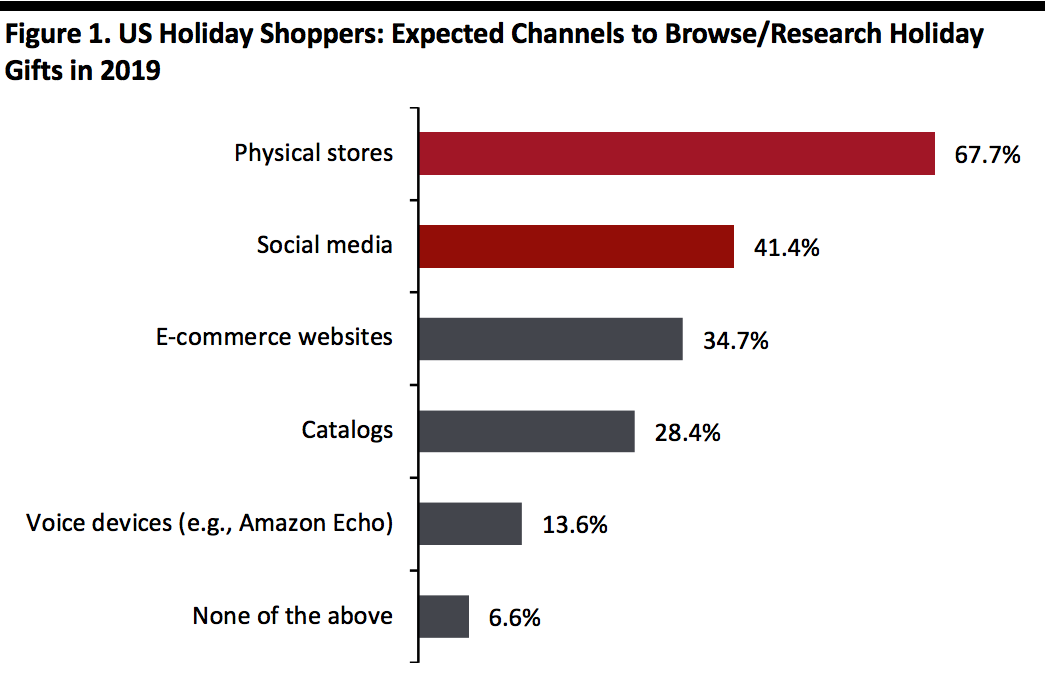 Base: 1,784 internet users aged 18 and above who expect to buy gifts this holiday season
Base: 1,784 internet users aged 18 and above who expect to buy gifts this holiday seasonSource: Coresight Research[/caption] With the help of visual search, shoppers can more easily search for online sites for products they come across on social media. Retailers and brands using visual search can attract and retain shoppers by showing near-similar styles and by recommending complimentary products. Social Media is the New Window-Shopping Destination Social media acts as a seamless visual channel between retailers and shoppers. The average social media user spends around two hours and 15 minutes on social media each day, according to market research company GlobalWebIndex. Companies recognize this potential and are leveraging social media platforms to showcase products to reach a wider audience. For example, Instagram allows businesses to tag products in a post, which users can use to shop for the item with the click of a button – and retailers are increasingly tagging products on Instagram posts that are available online. For example, H&M’s Instagram post below has tagged three products for which the customer can shop directly from its website. In addition, it features similar or complimentary styles under the “More from hm” section. [caption id="attachment_98977" align="aligncenter" width="700"]
 Source: Instagram[/caption]
Brands and retailers are increasing their reach on social media, which in turn leads to an increase in conversion rates. Visual content on social media has the potential to become the storefront of the future, introducing shoppers to newer styles and brands which they never knew existed: eight in 10 US shoppers purchased a product discovered on a brand’s social media post, according to a 2017 survey by social-commerce technology provider Curalate.
[caption id="attachment_98978" align="aligncenter" width="700"]
Source: Instagram[/caption]
Brands and retailers are increasing their reach on social media, which in turn leads to an increase in conversion rates. Visual content on social media has the potential to become the storefront of the future, introducing shoppers to newer styles and brands which they never knew existed: eight in 10 US shoppers purchased a product discovered on a brand’s social media post, according to a 2017 survey by social-commerce technology provider Curalate.
[caption id="attachment_98978" align="aligncenter" width="700"]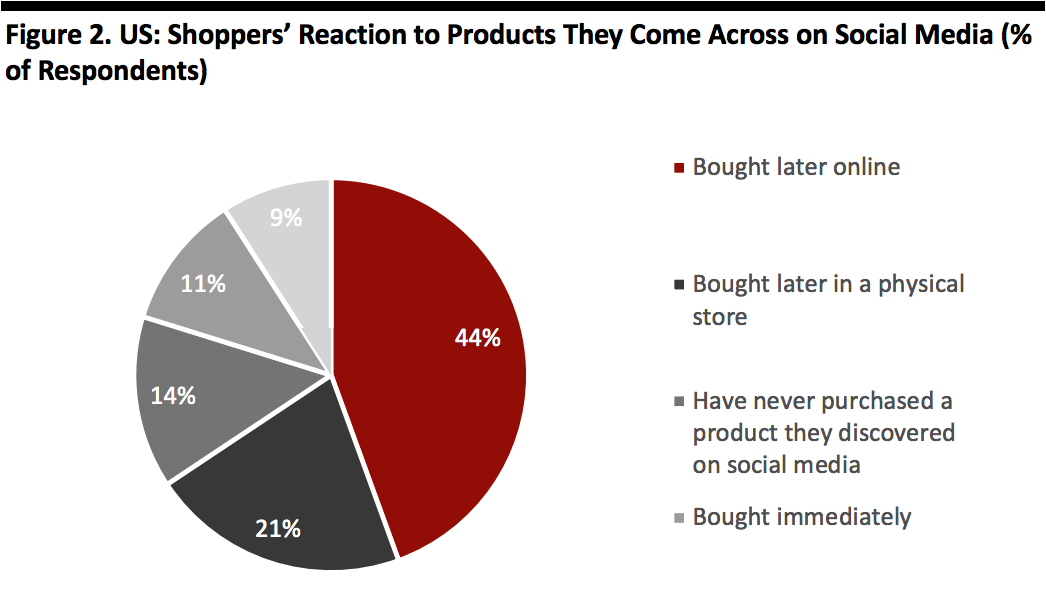 Base: 1,000 US adults aged 18-65; 2017
Base: 1,000 US adults aged 18-65; 2017Source: Curalate/OnePoll[/caption] Influencer Marketing on the Rise Influencer marketing has continued to grow in the past few years. This growth reflects the decline of the influence of TV and print advertising. Companies are harnessing the growth in social media consumption and are increasingly using Internet personalities to reach consumers. The influencer marketing industry is expected to reach $6.5 billion in 2019, from just $1.7 billion in 2016, having grown at a CAGR of 56%, according to Influencer Marketing Hub. [caption id="attachment_98979" align="aligncenter" width="700"]
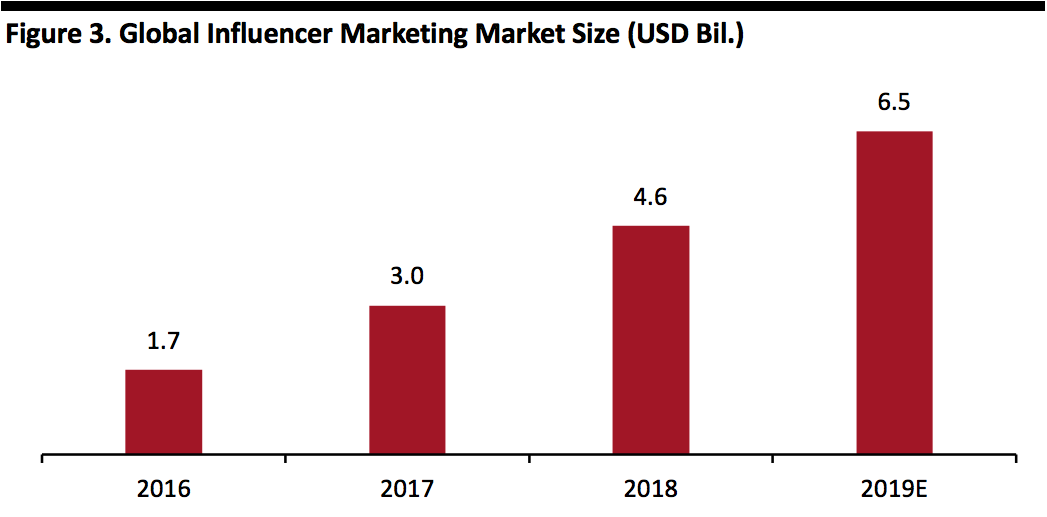 Source: Influencer Marketing Hub[/caption]
Retailers and brands understand the importance of scale that influencer marketing provides in comparison to official company accounts – and companies are allocating more budget to influencer marketing. According to a 2018 survey of 830 marketing professionals conducted by Influencer Marketing Hub, 86% of respondents intended to dedicate a portion of their budget to influencer marketing, and 63% of the respondents who already do expect to increase spending on influencer marketing.
This trend is expected to have a direct and substantial impact on the visual search market, primarily due to increasing content creation. Undoubtedly, retailers and brands that adopt visual search tools will have first-mover advantage as online product discovery becomes increasingly visual.
Shoppers Generating Visual Content
User-generated content on e-commerce websites such as reviews, ratings and product images can drive shoppers to make a purchase. According to an August 2017 survey of 1,000 US adults conducted by Curalate, 50% of respondents stated that user-generated content would make them more likely to buy a product through a brand’s social channel.
The conversion rate increases even if shoppers do not engage directly with it. Product pages with at least one review experience a 354% increase in conversion, according to digital marketing company Bazaarvoice.
And, online reviews are no longer limited to text: Photos and videos are increasingly becoming part of online reviews. Bazaarvoice has 1.1 billion monthly shoppers and these shoppers posted a total of 2.2 million photos online in 2018, a year-over-year increase of 25%.
Brands and retailers understand that the availability of visual content leads to a better shopping experience as it improves engagement, increases discoverability and strengthens brand trust among shoppers. Some 91% of UK brands and retailers agree that user-generated visual content leads to a more engaging experience, according to Bazaarvoice, while 86% of those surveyed agreed that user-generated visual content leads to increased discoverability of products.
[caption id="attachment_98980" align="aligncenter" width="700"]
Source: Influencer Marketing Hub[/caption]
Retailers and brands understand the importance of scale that influencer marketing provides in comparison to official company accounts – and companies are allocating more budget to influencer marketing. According to a 2018 survey of 830 marketing professionals conducted by Influencer Marketing Hub, 86% of respondents intended to dedicate a portion of their budget to influencer marketing, and 63% of the respondents who already do expect to increase spending on influencer marketing.
This trend is expected to have a direct and substantial impact on the visual search market, primarily due to increasing content creation. Undoubtedly, retailers and brands that adopt visual search tools will have first-mover advantage as online product discovery becomes increasingly visual.
Shoppers Generating Visual Content
User-generated content on e-commerce websites such as reviews, ratings and product images can drive shoppers to make a purchase. According to an August 2017 survey of 1,000 US adults conducted by Curalate, 50% of respondents stated that user-generated content would make them more likely to buy a product through a brand’s social channel.
The conversion rate increases even if shoppers do not engage directly with it. Product pages with at least one review experience a 354% increase in conversion, according to digital marketing company Bazaarvoice.
And, online reviews are no longer limited to text: Photos and videos are increasingly becoming part of online reviews. Bazaarvoice has 1.1 billion monthly shoppers and these shoppers posted a total of 2.2 million photos online in 2018, a year-over-year increase of 25%.
Brands and retailers understand that the availability of visual content leads to a better shopping experience as it improves engagement, increases discoverability and strengthens brand trust among shoppers. Some 91% of UK brands and retailers agree that user-generated visual content leads to a more engaging experience, according to Bazaarvoice, while 86% of those surveyed agreed that user-generated visual content leads to increased discoverability of products.
[caption id="attachment_98980" align="aligncenter" width="700"]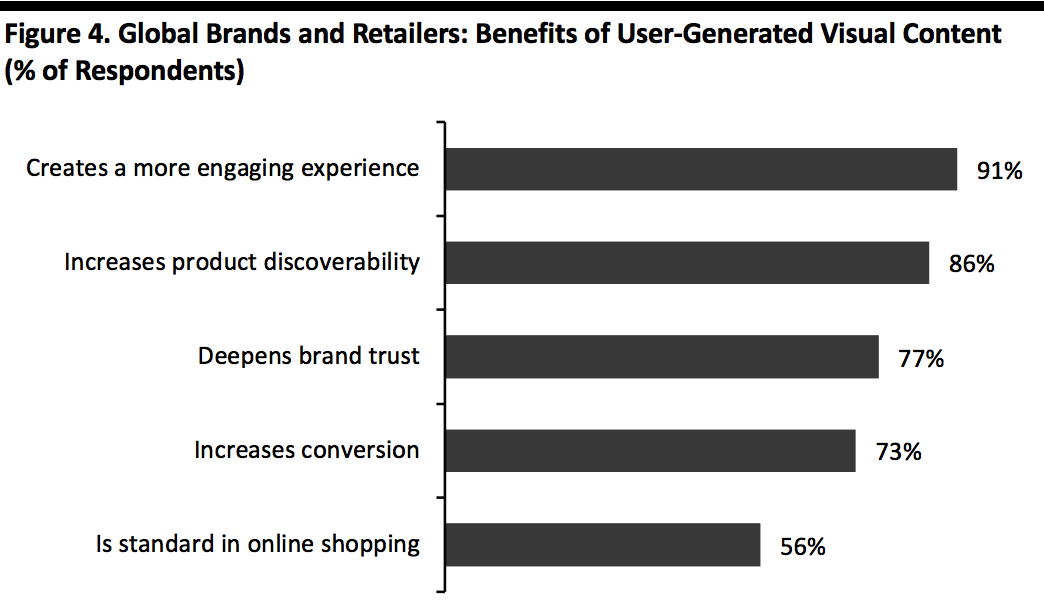 Base: 500 global brands and retailers; the report did not provide a geographical breakdown of respondents; 2018
Base: 500 global brands and retailers; the report did not provide a geographical breakdown of respondents; 2018Source: Bazaarvoice[/caption] Syte: Key Offerings and Features Syte empowers retailers with visual AI technology that enables them to better connect with shoppers by offering increased personalization. With Syte, retailers increase the reach of the catalog beyond text search: Shoppers can use images to search in-style apparel, footwear or any other items of their choice. We discuss its key offerings under specific categories below. 1. Camera Search What is camera search? With camera search, shoppers click a picture of any product that interests them, or upload from a gallery, Syte’s technology identifies the items in the image and displays visually similar products. What are the benefits of camera search? According to Syte, its camera search technology offers the following benefits:
- The average conversion rate for Syte’s clients has increased by 8-10%, improving customer acquisition, engagement and loyalty.
- One Syte client experienced an eight-fold conversion rate increase when visual and text search were combined.
- With fast and accurate results, Syte technology can increase page visits per session as much as 125%.
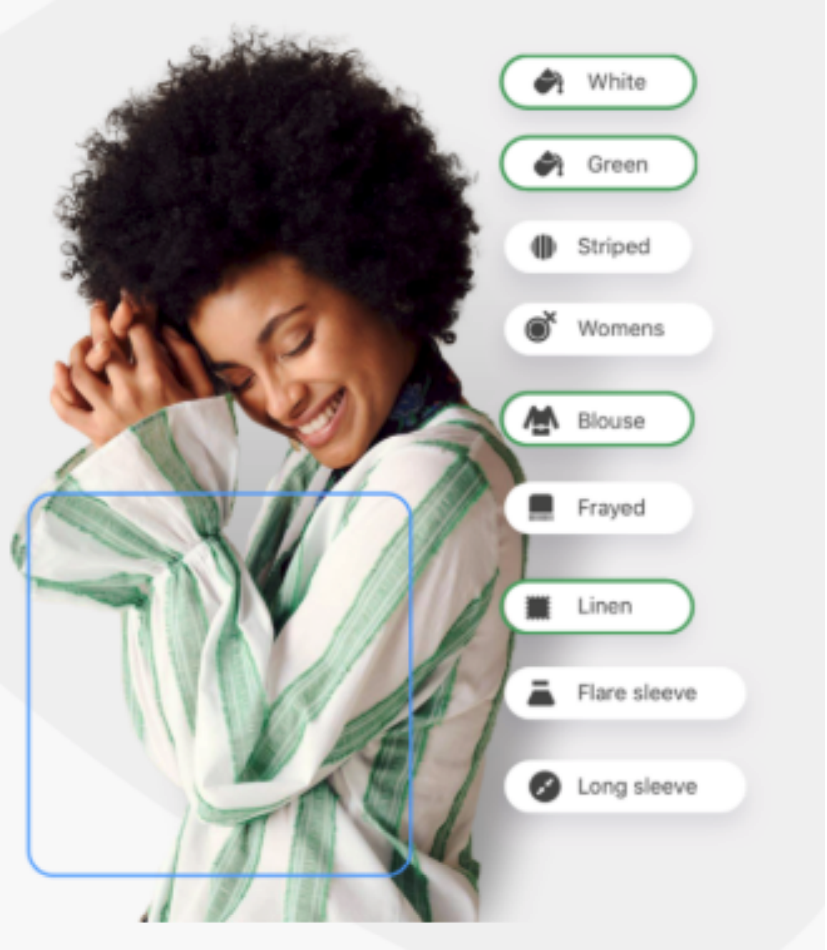 Source: Company website[/caption]
What are the benefits of deep tagging?
Syte’s deep tagging can reduce average tagging costs by 90% and provides a conversion rate uplift (on average) between 1% and 11%, in addition to:
Source: Company website[/caption]
What are the benefits of deep tagging?
Syte’s deep tagging can reduce average tagging costs by 90% and provides a conversion rate uplift (on average) between 1% and 11%, in addition to:
- The image to text application programming interface (API) enabling clients to tag products automatically.
- Deep tagging allows retailers to offer visual navigation — an icon-based search tool that allows shoppers to narrow the search results until they find the desired product.
- Deep tagging simplifies the text search process for shoppers: Features such as auto-suggest and spelling correction increase the accuracy of text search.
- Deep tagging improves search engine visibility and ranking, due to the amount of data each product page holds.
 Source: Company website[/caption]
What are the advantages of a recommendation engine?
Recommendation engines increase the likelihood of a shopper making a purchase, primarily due to increased options.
Source: Company website[/caption]
What are the advantages of a recommendation engine?
Recommendation engines increase the likelihood of a shopper making a purchase, primarily due to increased options.
- Recommendation engines enable retailers to increase the visibility of products on the website.
- Recommendation engines enable online marketplaces and retailers to automatically showcase items similar to products the shoppers are looking at, making it easier to find new products.
- With image search technology, shoppers can look for anything they see in a picture. For example, a shopper might be interested in a specific item shown in an image containing several objects. Now, the shopper can find all products similar to those in the image using the “shop the look” feature.
- Syte enables clients to pair relevant user-generated visual content on social media with products in the catalog, which makes almost every style shoppable.
Syte: Selected Case Studies
Competitive Advantages
Syte believes it benefits from the following competitive advantages:- Accuracy: Syte says it provides 95% accuracy for its visual search results, which can be as much as six times more accurate compared to similar technologies.
- Hight speed: Syte offers near-zero latency search results, making it especially effective for retailers with a large number of SKUs.
- Multi-Object Detection: Syte’s visual search technology detects all shoppable products in an image with a single upload, eliminating the need to edit and upload multiple images.
Business Model and Upcoming Events
Syte is a software-as-a-service (SaaS) provider that offers one-year contracts, with pricing based on the products selected and monthly online traffic.Coresight Research View
The retail industry is undergoing transformation with shoppers expecting a personalized shopping experience across all retail touchpoints, which is complimented with increased choices and a broader availability of visual content on the internet. With increasingly fickle shoppers, it has become more necessary than ever for retailers to effectively showcase products, who can be inspired by popular social media influencers or by a product they come across in a physical store. In the coming few years, visual search tools may become mainstream. Visual search technology providers such as Syte are strongly positioned to benefit from the changing market landscape. We think Syte is one of the few companies that offer a complete visual search solution ranging from online offerings to in-store smart technologies.Company Contact Ariel Geifman Head of Marketing ariel.g@syte-vc.com +972-52-786-6300